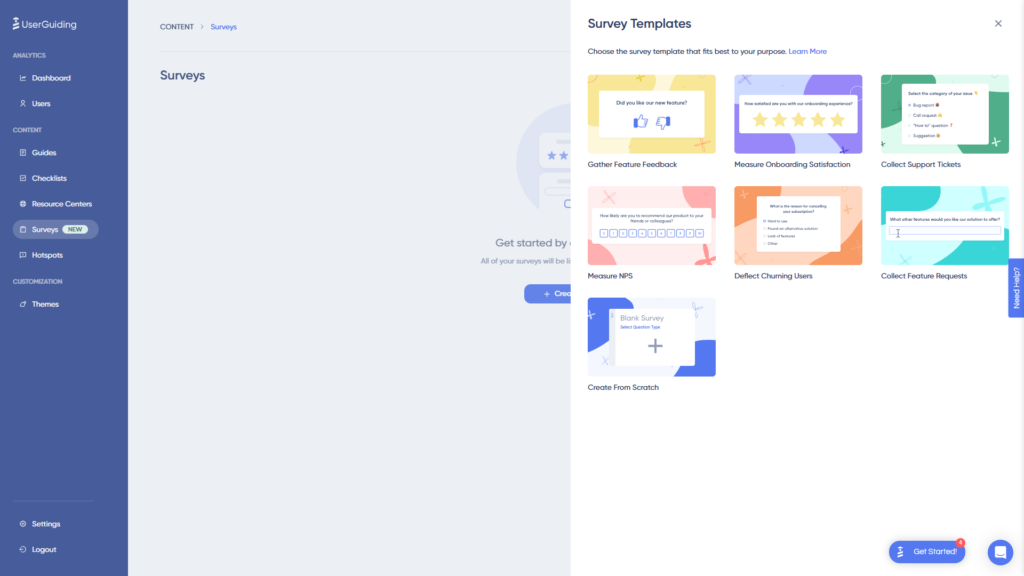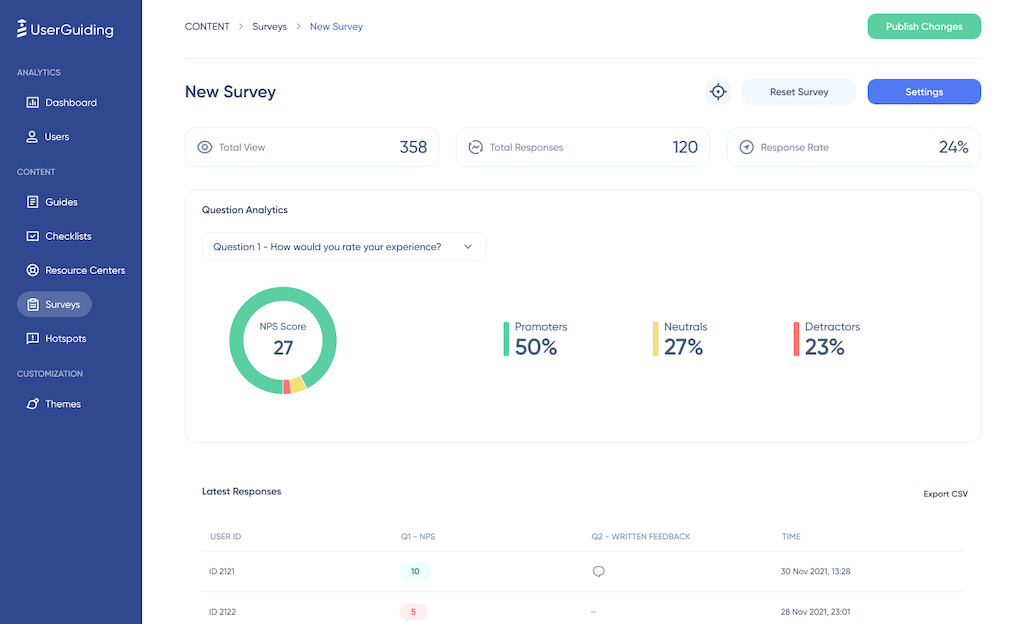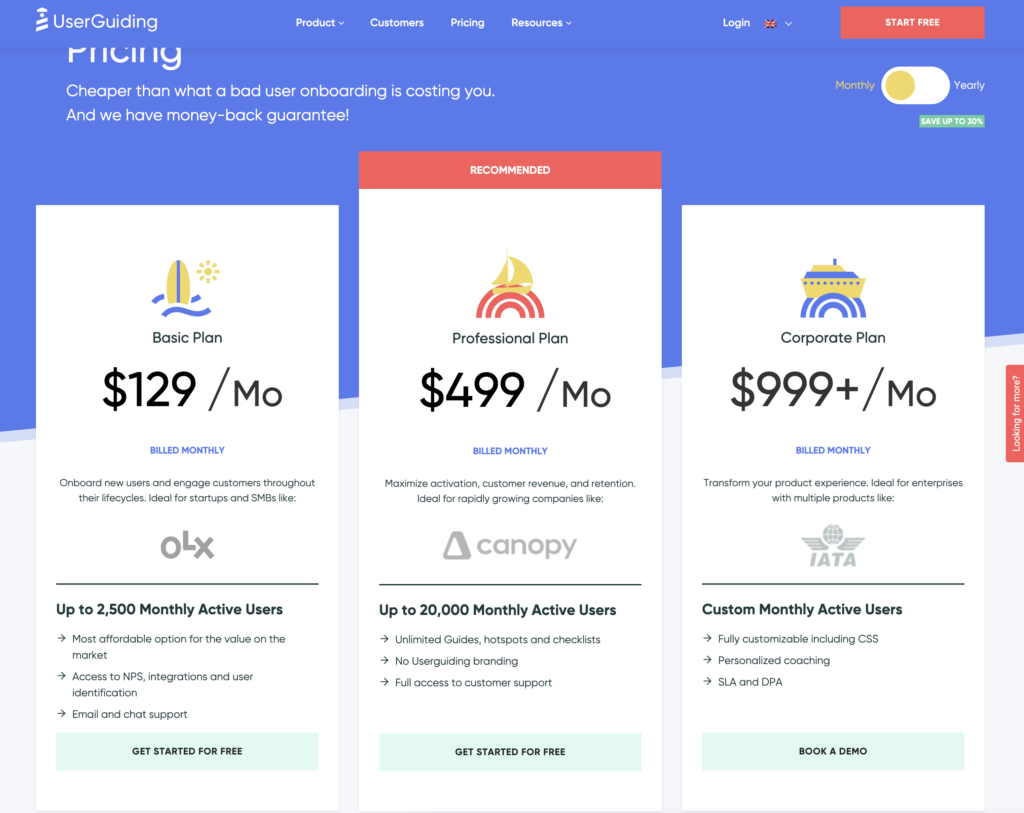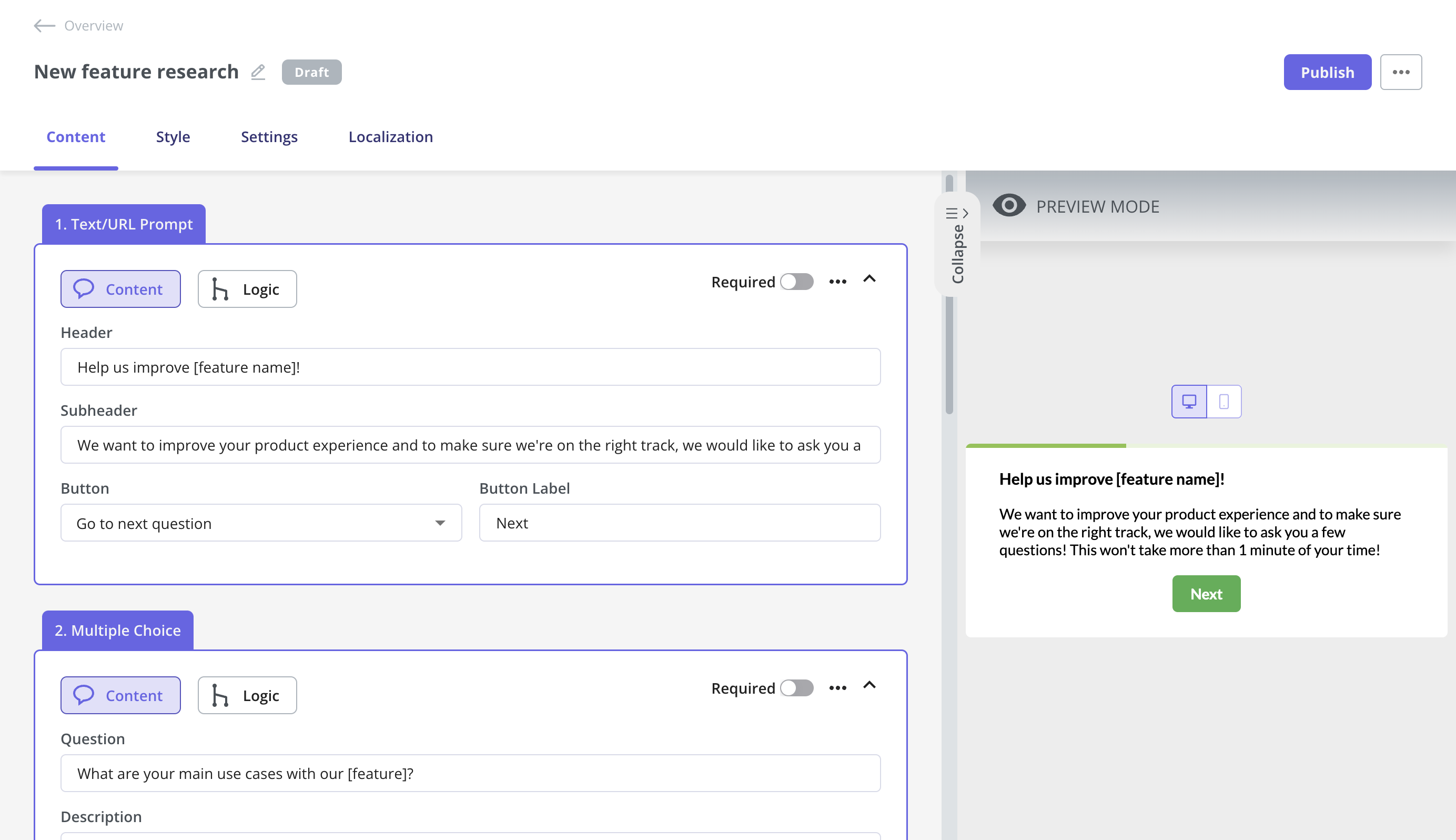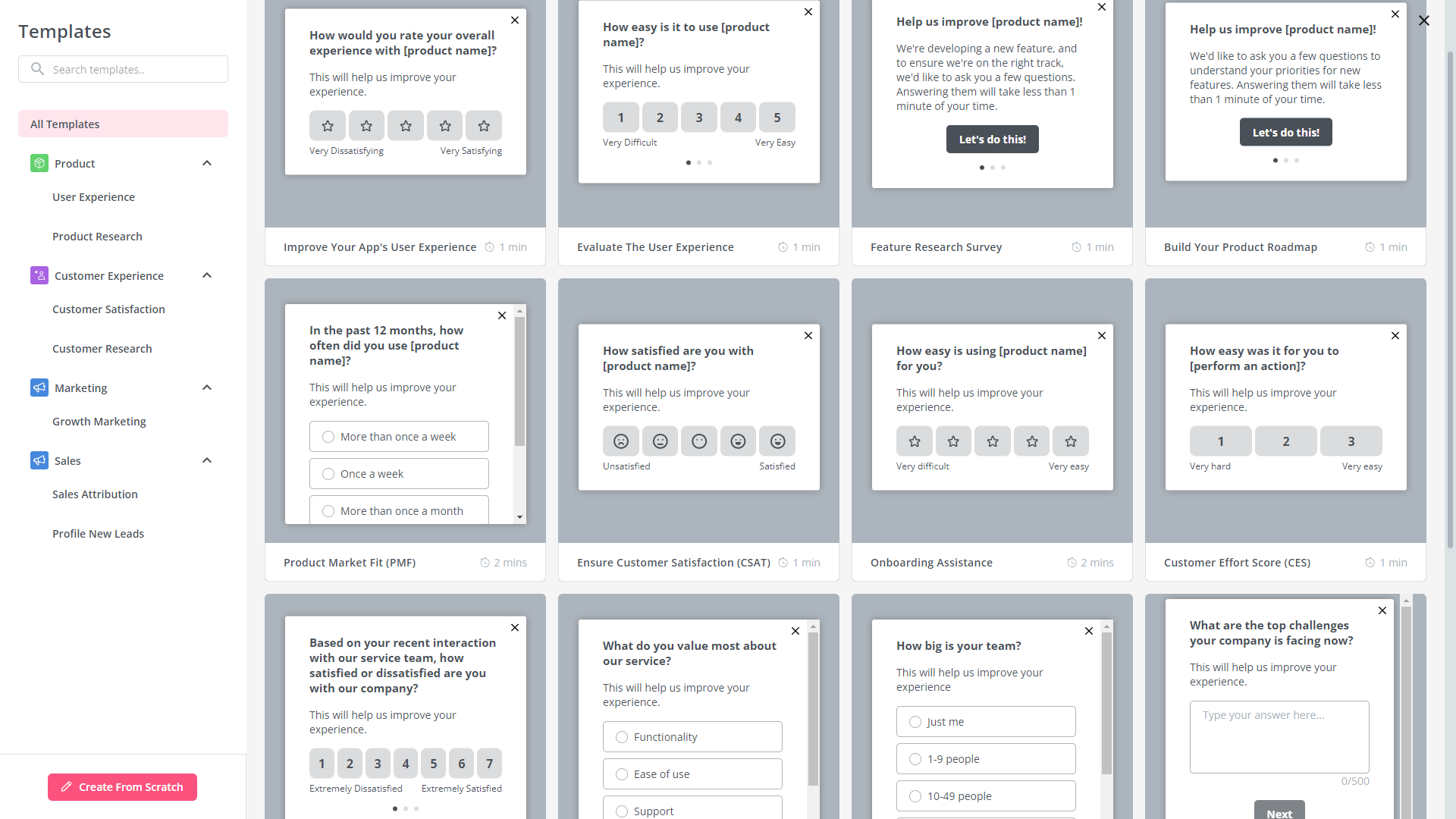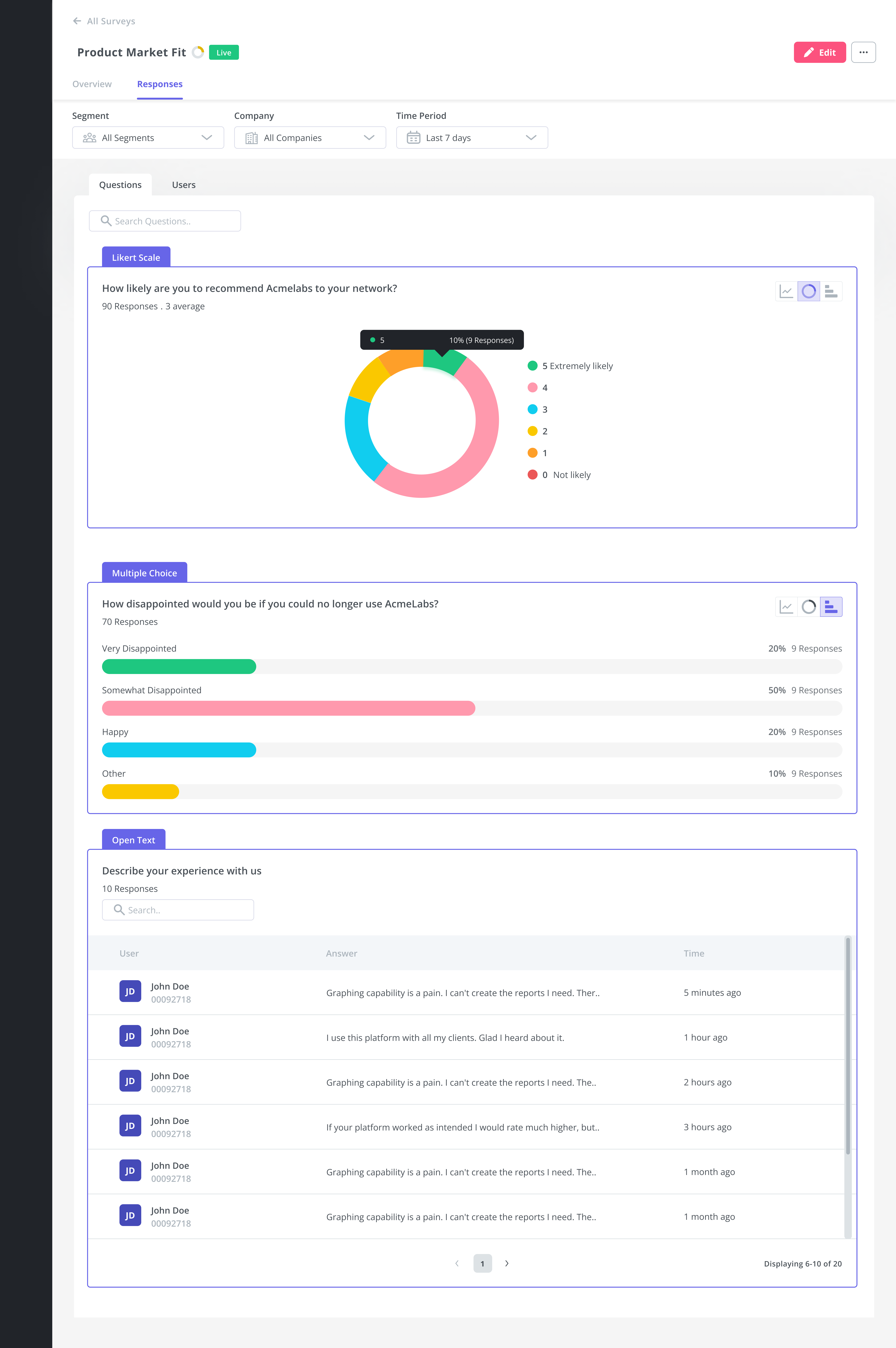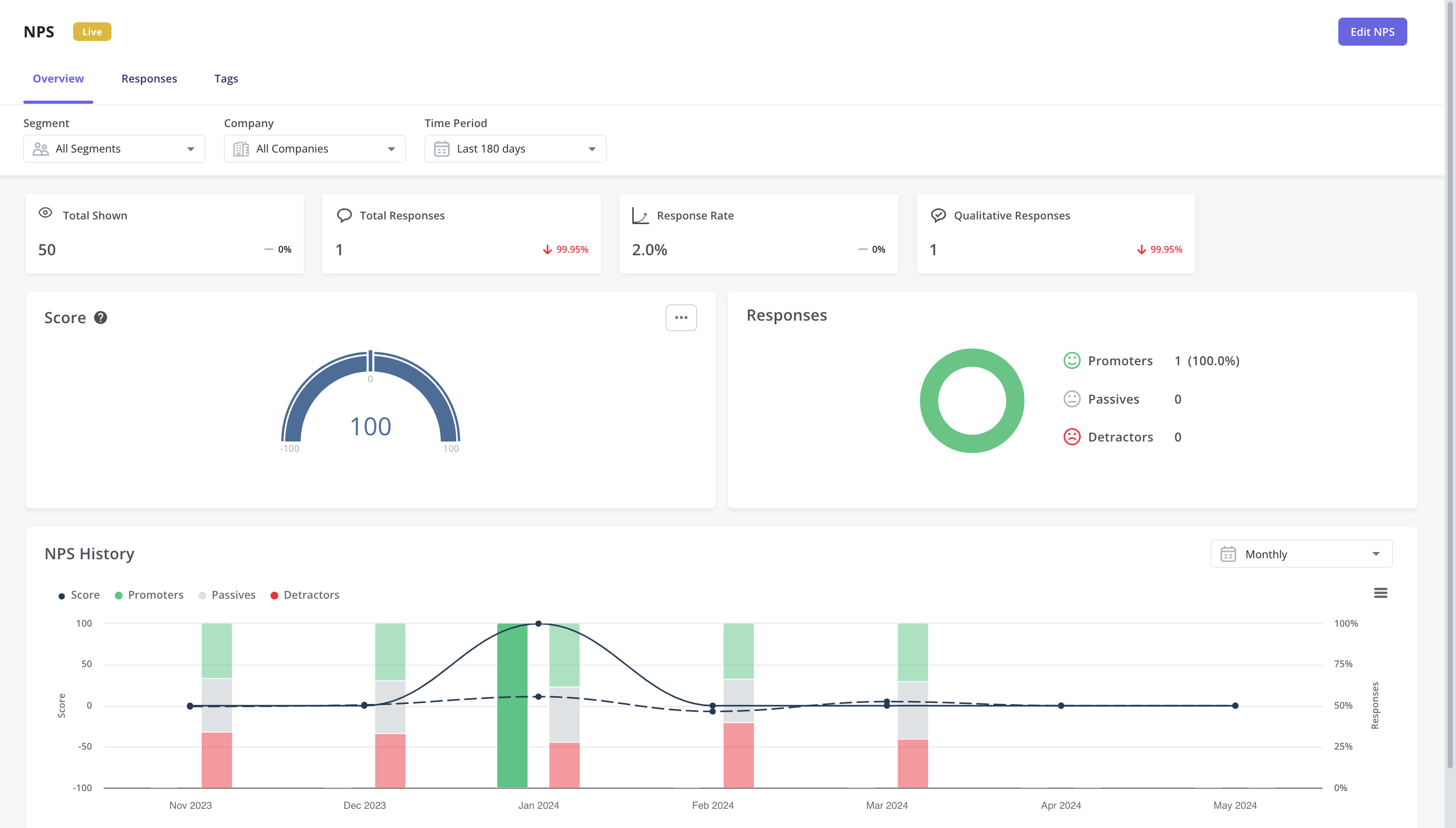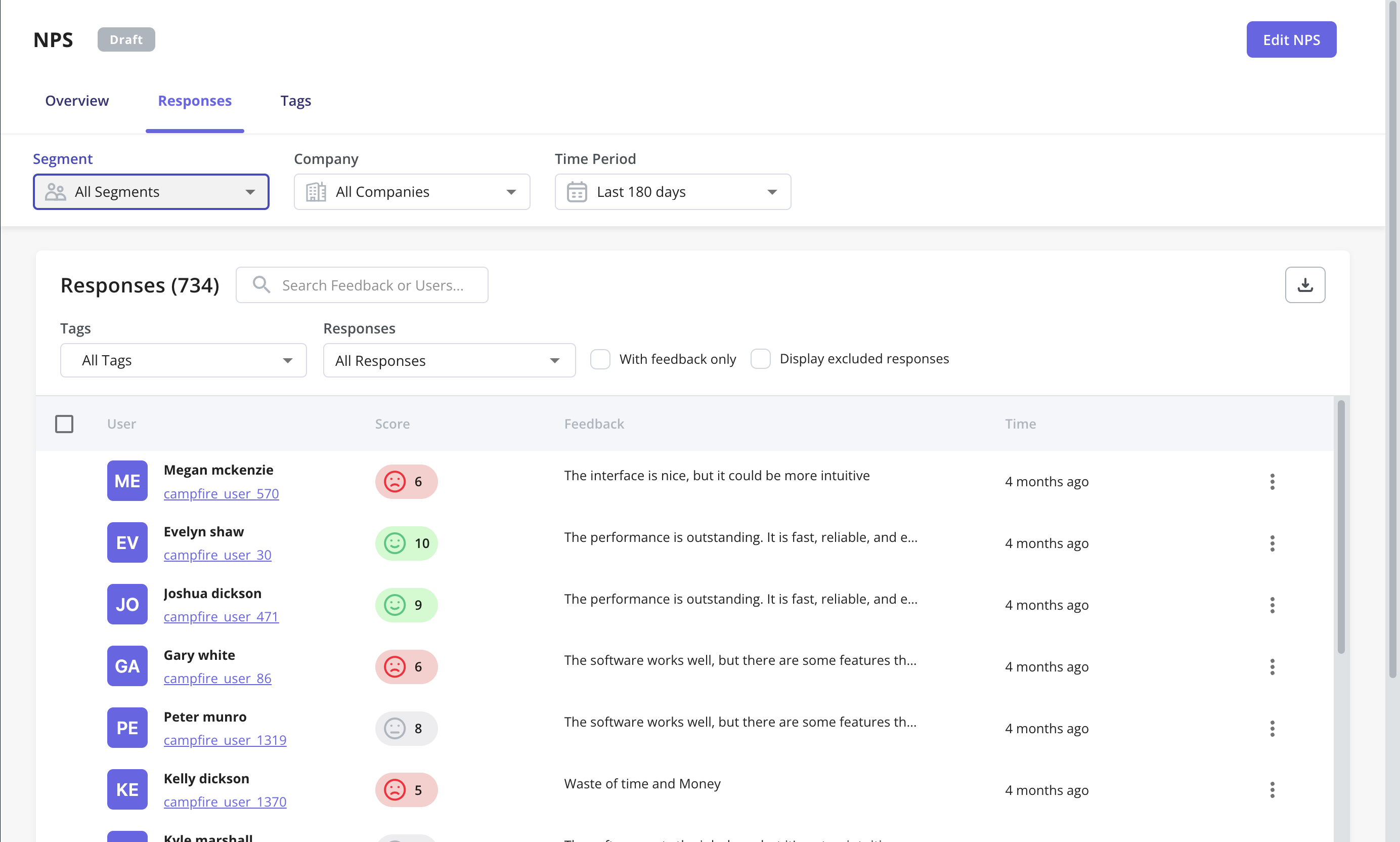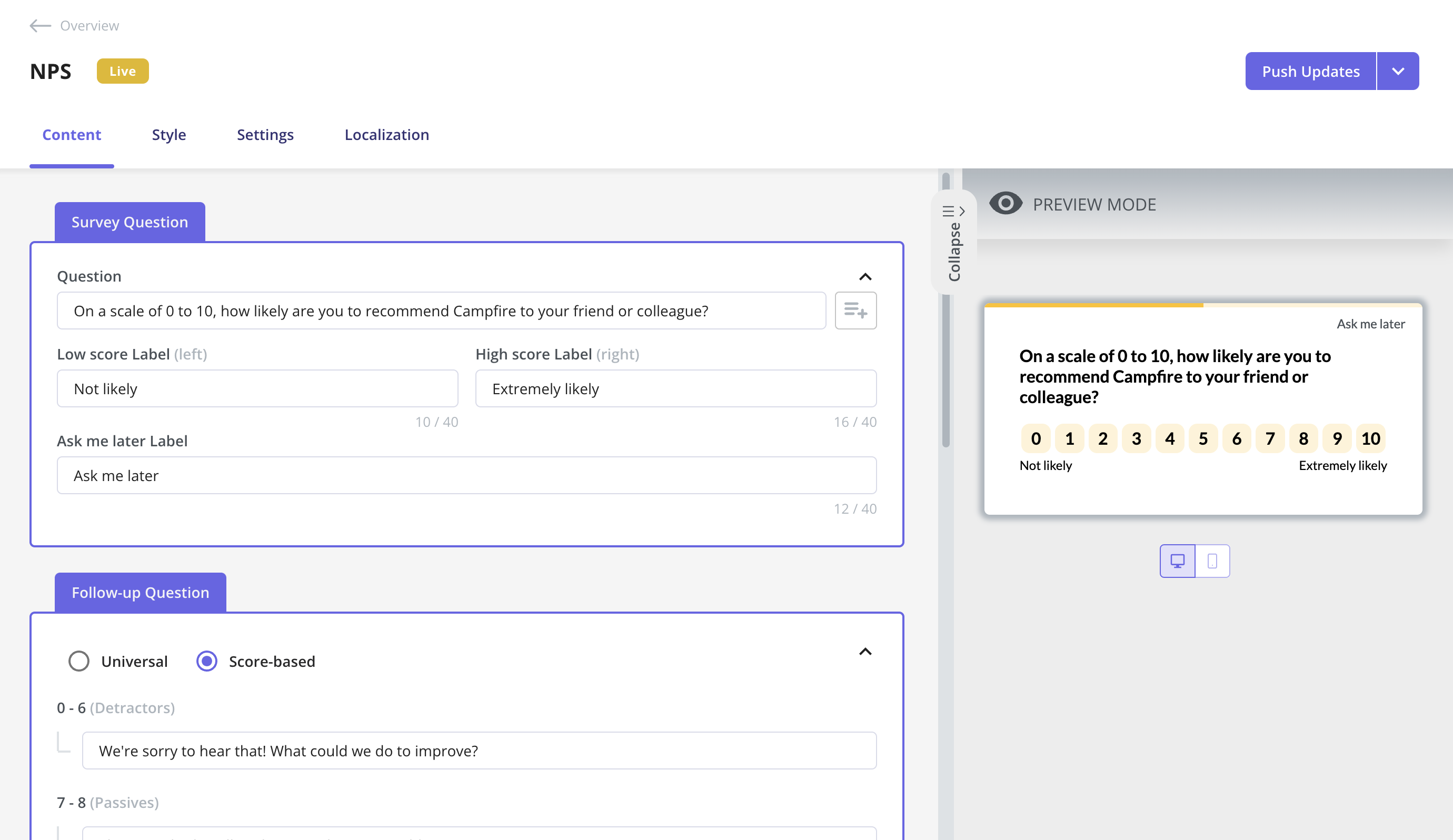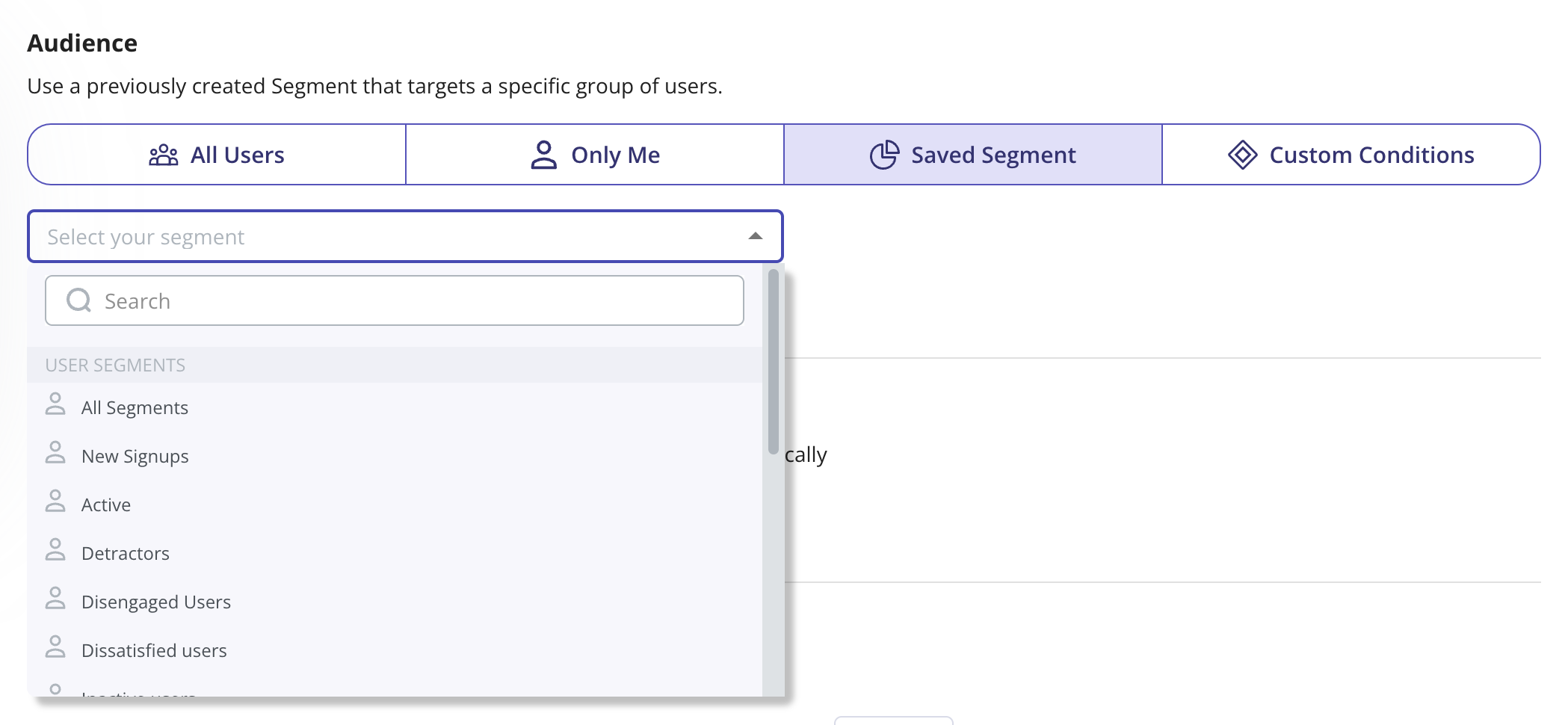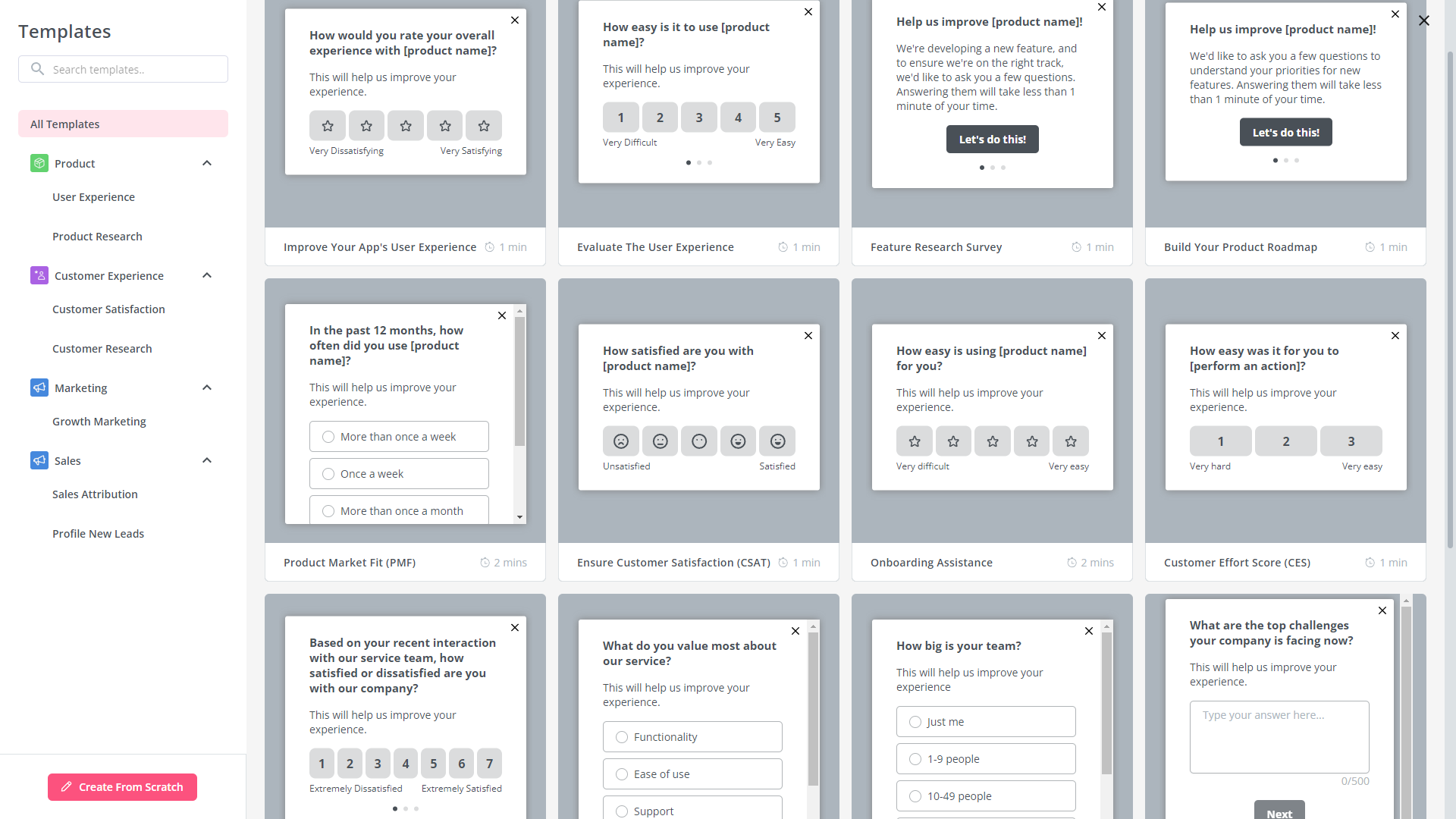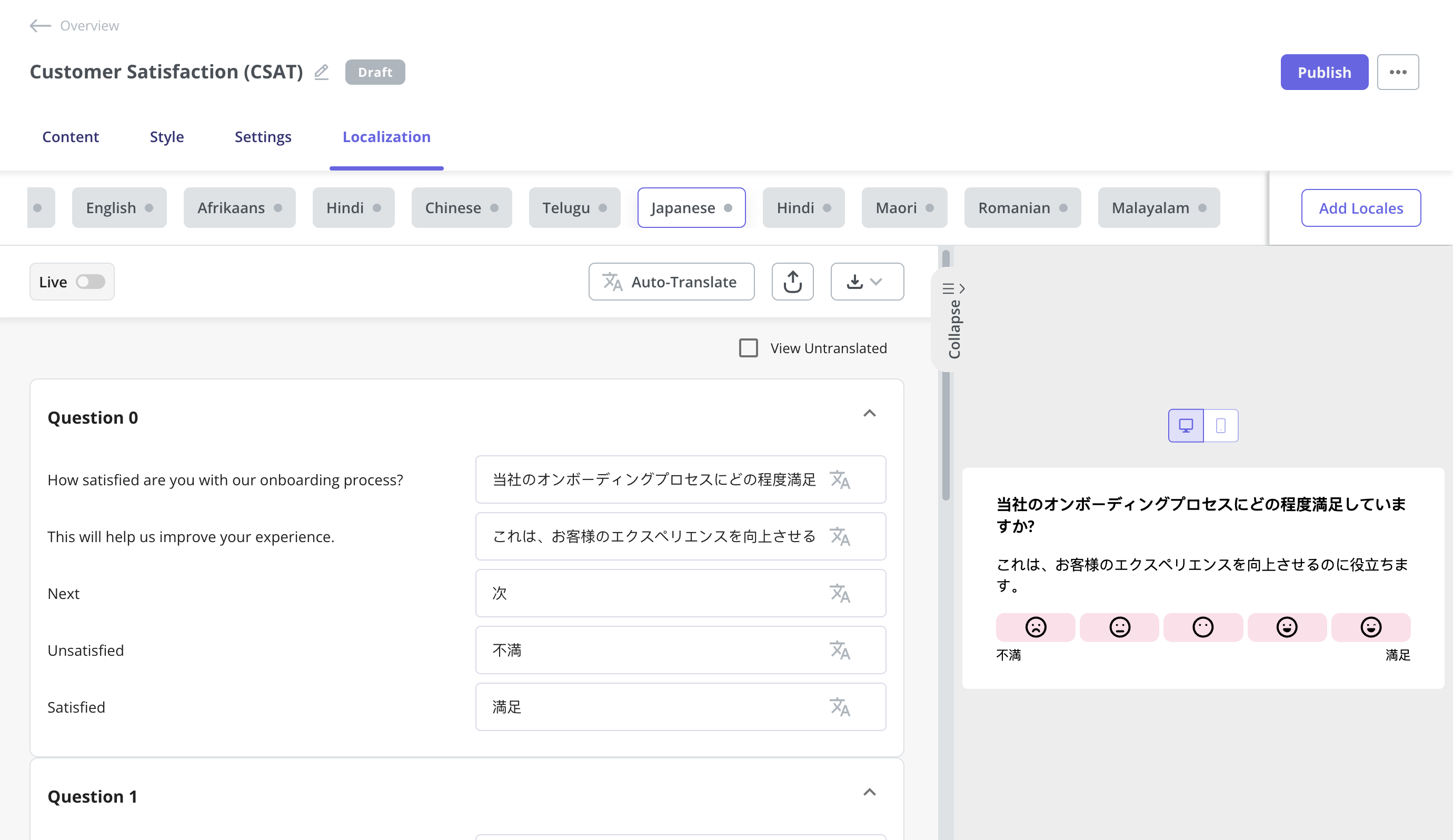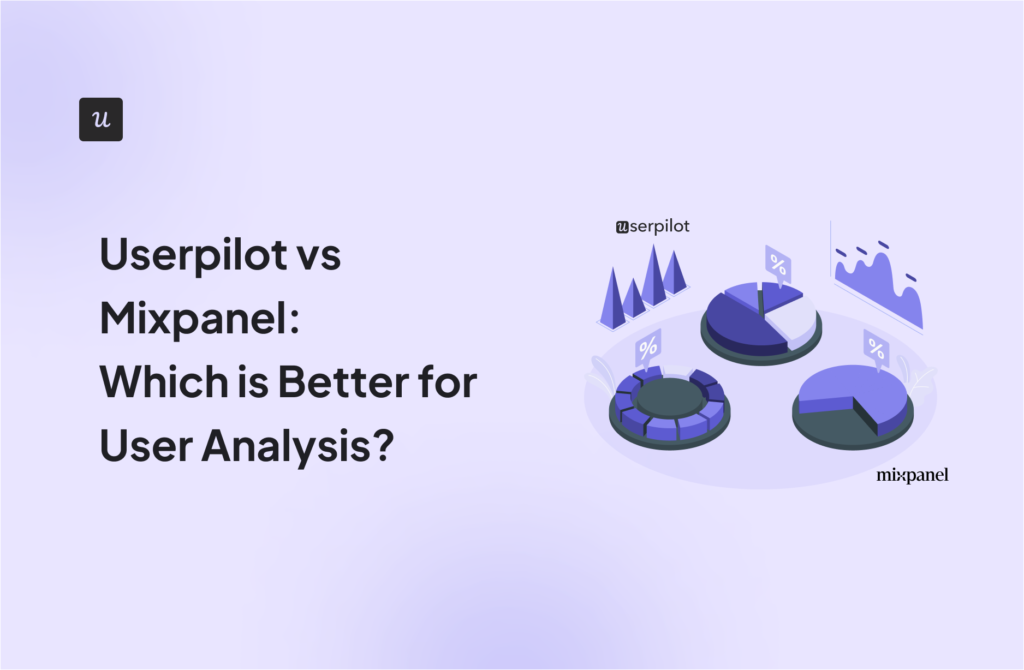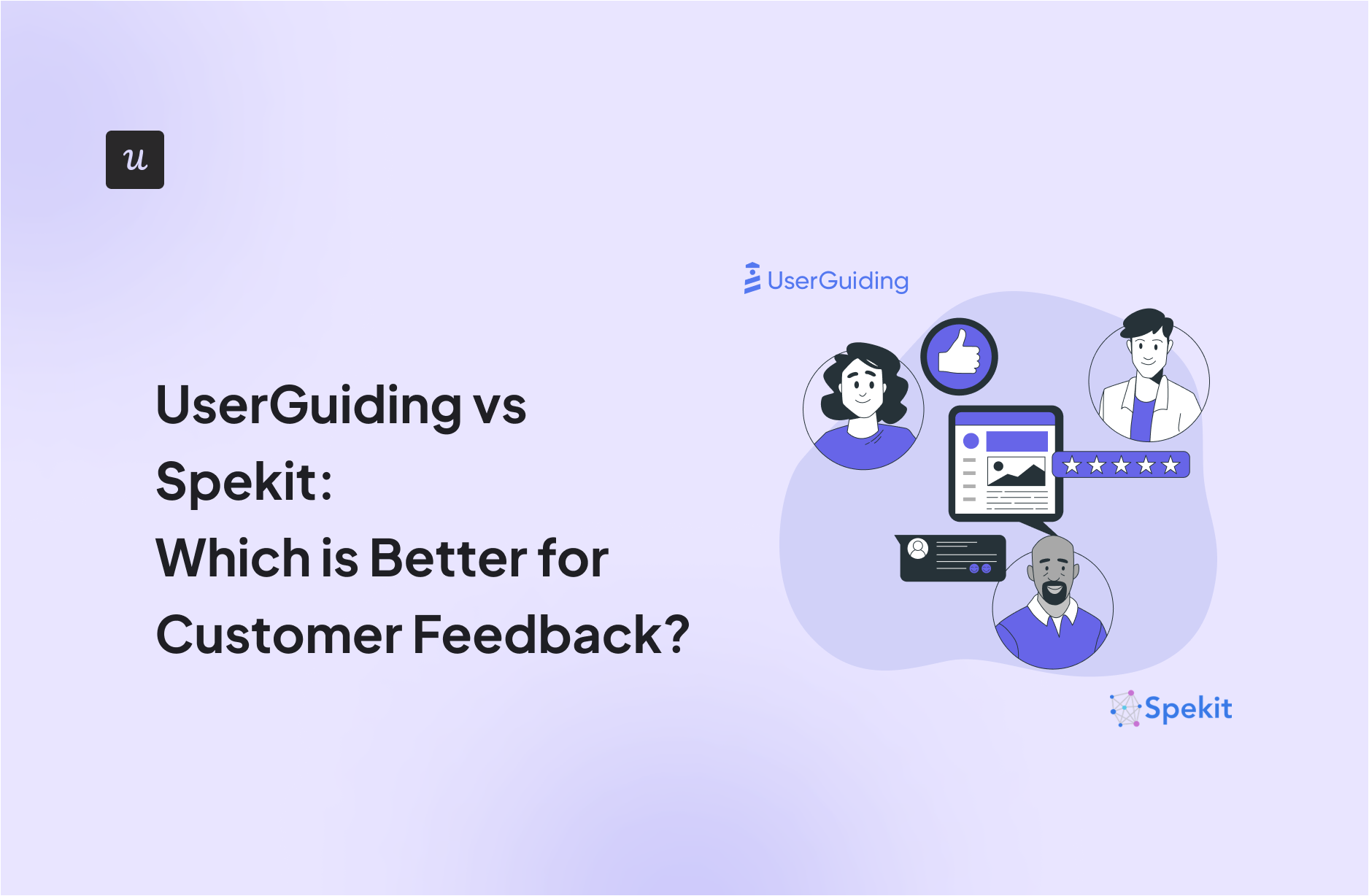
Is UserGuiding or Spekit the best tool for customer feedback? And is there a better software that would better fit your needs?
With so many alternatives on review sites, it’s a bit tricky to really choose one.
It would be best to consider your priorities and the functionalities you’ll need from the tool to get the job done. Then there’s also the price that needs to match your budget. Right?
In this post, we’ll discuss exactly what the perfect tool for performing customer feedback should deliver and which will be the best choice for your company’s needs.
Let’s dive in!
Try Userpilot Now
See Why 1,000+ Teams Choose Userpilot

Comparison overview of UserGuiding vs Spekit for customer feedback
- Let’s explore how UserGuiding and Spekit compare when it comes to collecting customer feedback.
- UserGuiding is a no-code product adoption tool that lets users create in-app walkthroughs, guides, and checklists. The solution makes it possible for teams to onboard, engage, and retain users without needing coding skills to create these in-app experiences.
- Spekit doesn’t have traditional customer feedback collection features like qualitative surveys or NPS dashboards. However, it does offer a couple of (admittedly limited) options for collecting feedback from your employees who interact with Spekit’s resources or flows:
- Considering functionalities and value for money, Userpilot is a better choice when it comes to collecting customer feedback. With features such as NPS surveys, in-app surveys, and survey analytics, it can help you with collecting and analyzing customer insights without coding.
- Get a Userpilot demo and drive your product growth code-free.
What is customer feedback?
Customer feedback is important if you want to truly serve your customers and come up with solutions that can solve their pain points.
Here is why customer feedback matters:
- Understand whether customers see value in your product and if it meets their needs.
- Uncover weak spots of your product and bottlenecks that disturb the customer journey.
- Make your customers voices heard and acknowledge them that they are important to you.
- Collect real-time insights on the go as you’re introducing new features or product updates.
Must have features for customer feedback tools
On the lookout to find the best customer feedback tools? We’ve curated a list of the best tools that are trustworthy:
- Userpilot: best customer feedback tool for creating NPS surveys without Userpilot branding and with NPS tagging capability.
- Appcues: best customer feedback tool for creating mobile surveys.
- UserGuiding: best customer feedback tool for creating different types of microsurveys.
- Pendo: best customer feedback tool for feedback analytics.
- Chameleon: best customer feedback tool for contextual in-product feedback.
Let’s dive deeper into how each stacks up for different company sizes, budgets, and jobs to be done!
UserGuiding for customer feedback
UserGuiding’s recently-added surveys feature does make it possible to collect user feedback. However, that’s the extent of user feedback capabilities that you’ll be able to get within the UserGuiding toolkit.
Here are a few pros and cons of UserGuiding’s survey feature:
- Build NPS surveys without writing a single line of code.
- Adjust the thank you page and add a follow-up question to gather qualitative data and understand the reasons behind the scores.
- Customize the button texts, colors, and designs to match your brand.
- Set up custom audiences, segments, timing, and targeting rules to trigger the surveys.
- Templates: Collecting user feedback can be pretty quick with UserGuiding, thanks to its template gallery. If you select one of the six templates, then you could have a new survey up and running in less than a minute (but it may need some tweaking further down the line).
- Those on the Basic version of UserGuiding will only be able to have one survey active at a time which means you won’t be able to have multiple single-purpose surveys in your app, unless you upgrade your subscription.
- UserGuiding survey analytics are quite limited as they only show you total views and total responses rather than the number of views/responses for a specific date range.
- The survey builder on UserGuiding is quite intuitive as it lets you add new questions with a simple dropdown menu of various question types.
NPS surveys in UserGuiding
The Net Promoter Score is a highly-reliable metric for customer satisfaction and brand advocacy, which is why UserGuiding has a template for this use case. However, there are some limitations you need to be aware of when using UserGuiding to gather NPS data:
- NPS Analytics: UserGuiding automatically calculates the percentage of promoters, detractors, and neutrals so you can gauge customer sentiment at a glance.
- Survey Analytics: Unlike the other metrics, survey analytics aren’t readily available on the UserGuiding home dashboard. Furthermore, they only show you the total views and responses for a survey instead of letting you choose a specific data range to analyze.
- Survey Limitations: Because users on the Basic plan are only allowed to have one survey active at a time, running an NPS survey all the time will prevent you from creating additional surveys (unless you deactivate it or upgrade your subscription).
In-app surveys in UserGuiding
While UserGuiding didn’t launch with surveys as a feature, it was added later in the product development cycle and is available to users on all pricing tiers. In-app surveys tend to have higher response rates and offer more accurate insights into the customer experience than email surveys.
Here are a few pros and cons of UserGuiding surveys:
- Templates: There are six survey templates to choose from, covering the areas of feature feedback, support, NPS, churn, and feature requests.
- Analytics: UserGuiding does offer survey analytics as a part of its platform, but it’s not visible on the home dashboard and doesn’t show you the number of views/responses for specific periods.
- Limitations: Users on the Basic plan can only have one active survey at a time, while those on the Professional plan can have three active.
Spekit for customer feedback
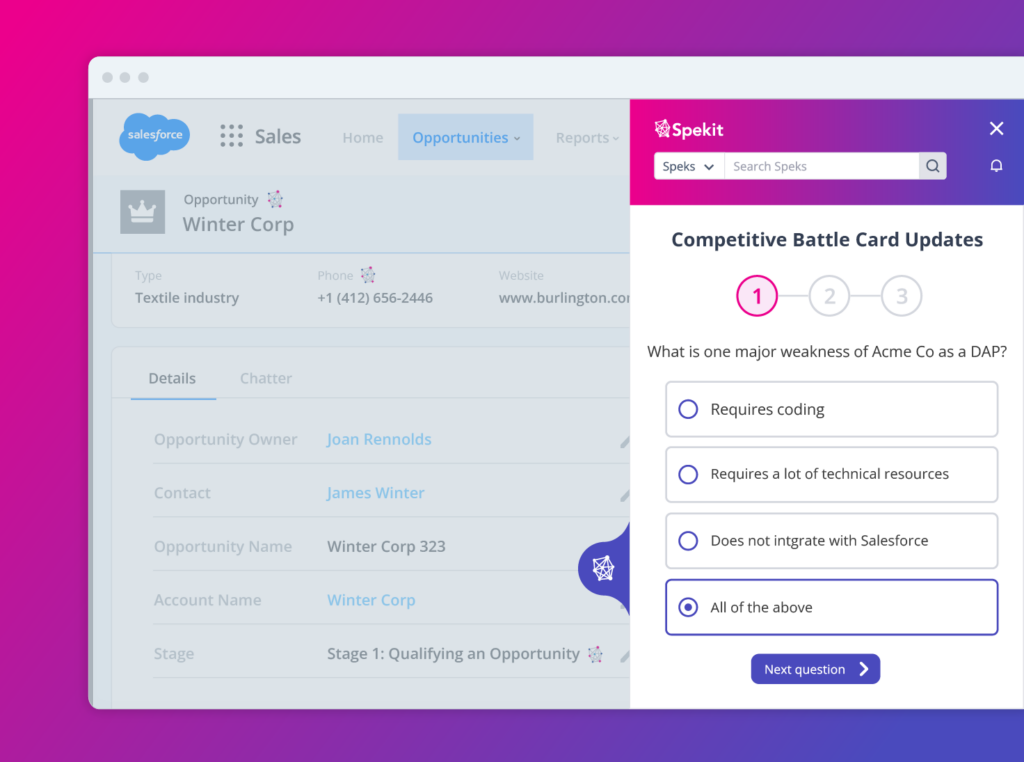
Spekit doesn’t have traditional customer feedback collection features like qualitative surveys or NPS dashboards. However, it does offer a couple of (admittedly limited) options for collecting feedback from your employees who interact with Spekit’s resources or flows:
- Knowledge Checks: Spekit’s knowledge checks are a gamified way to get your employees to recall and memorize key bits of information. This will help them retain the instructions for using third-party applications and increase the odds that they adopt the software long-term.
- Sentiment Surveys: Spekit lets run sentiment surveys in the form of an emoji rating scale to measure how satisfied employers are with certain flows. Unfortunately, there’s no way to ask follow-up questions or get any other type of qualitative feedback through these surveys.
- Feedback Limitations: In addition to the lack of qualitative feedback surveys, Spekit also lacks any product analytics that could be used to validate the (already limited) quantitative data that it collects.
NPS surveys in Spekit
Spekit doesn’t have NPS surveys. In fact, it lacks any form of customer feedback collection whatsoever because it’s an employee onboarding solution only meant for internal use (and with no user-facing features that are visible externally).
In-app surveys in Spekit
Spekit cannot be used to build in-app surveys for customer feedback collection since the tool is installed on a browser level and therefore only accessible by your employees. However, you can use Spekit to run feedback surveys that measure employee sentiment.
In addition to being limited to internal use, the usability of these surveys are further reduced by the fact that they can only collect quantitative data in the form of scalar emoji ratings with no text input. If surveys are a key use case for you, then consider using alternatives like Userpilot or Pendo.
Pros and cons of UserGuiding
You might need an alternative solution to UserGuiding if you fall into any of the following use cases:
- Advanced analytics: If you’re looking for a product adoption platform with full-suite native analytics then you’ll likely need to look at platforms like Userpilot or Appcues that are better suited to your needs.
- Create fully interactive product tours: While UserGuiding excels in creating in-app experiences and user guides, it may not offer the breadth of tools needed to fully support a comprehensive product adoption strategy.
- Build segments completely code-free: As segmentation features aren’t very intuitive and may require additional help from a developer.
Pros of UserGuiding
UserGuiding has quite a few benefits as a product adoption solution, particularly for early-stage SaaS companies that need an easy-to-use starter tool for their small (but growing) team of product developers or marketers. Let’s look at some of the pros that UserGuiding has to offer:
- Chrome extension – UserGuiding utilizes a no-code Chrome extension.
- Survey template gallery – UserGuiding lets you choose from six survey templates or create your own survey from scratch.
- Analytics dashboard – users can see their monthly active users (MAUs) for the month, monitor the number of views their guides are getting, and see how many interactions checklists or resource centers have had in the past week from the UserGuiding homepage.
- Custom themes – granular theme customization and color selection.
- Easy onboarding – onboarding checklist walks you through key steps, such as how to get the UserGuiding Chrome extension and create your first guide.
Cons of UserGuiding
While there are quite a few benefits to using UserGuiding, there are three significant drawbacks to note:
- Dashboard customization – you can’t edit your home dashboard or choose which analytics you want to see.
- Pricing jumps – upgrading from Basic (2,500 MAUs) to Professional (20,000 MAUs) increases your subscription cost by more than 4x.
- Manual localization – UserGuiding doesn’t have AI-powered localization, so you’ll need to manually download, translate, and upload every CSV when attempting to localize content for your product.
- HubSpot integration – the UserGuiding-HubSpot integration is only a one-way integration which limits its functionality and prevents you from setting up two-way data synchronization between both platforms.
- Limited analytics – the analytics dashboard only shows you data for onboarding materials created with UserGuiding and even those analytics are quite limited as surveys only show you total responses rather than letting you select a date range.
- Survey limit – you can only have one active survey on the Basic plan which is disappointing considering UserGuiding costs over $1,000 annually (whereas Userpilot lets you create unlimited surveys and collect up to 250 responses per month on the cheapest plan).
Pros and cons of Spekit
Spekit is perfectly viable as an employee onboarding tool but its usability is limited by the narrowly focused feature set.
Here are a few scenarios where you should consider using alternative solutions instead of Spekit:
- Onboarding Analytics: Despite Spekit focusing on (employee) onboarding, it lacks the detailed analytics that you’d need to optimize your flows. You’ll likely need to use additional tools to collect and analyze data if you use Spekit as your primary onboarding platform.
- UI Navigation: While installing the Chrome extension is fairly straightforward, actually navigating through its interface can be more difficult due to the subpar layout and performance issues.
- Contextual Onboarding: If you want to create contextual onboarding flows for multiple segments then Spekit might not be the best tool. Its segmentation capabilities aren’t the best and there are plenty of other tools in the same space with better segment targeting features.
Pros of Spekit
Spekit is a handy solution for employee onboarding use cases.
Here are some of its main benefits:
- Chrome Extension: Spekit can be installed in any web-based application and then accessed through the Chrome extension.
- Knowledge Bases: You can build multiple knowledge bases with different formats for each respective team in your organization.
- Internal Access: Your new employees will be able to find all the resources they need in a single place instead of having to ask coworkers multiple questions per day.
Cons of Spekit
Spekit has notable limitations that could be a deal-breaker for certain companies or use cases:
- Onboarding Limitations: Tooltips and modals are the only UI patterns that you can use when building in-app flows with Spekit.
- Product Experience: Spekit’s software has numerous bugs and performance issues that you’ll need to reckon with when using the tool (along with subpar UI navigation).
- Analytics Shortcomings: Spekit lacks feedback collection and analytics reporting capabilities which makes it hard to identify areas that need improvement.
UserGuiding vs Spekit: Which one fits your budget?
Understanding the cost implications is paramount when selecting the right solution for customer feedback, so here’s a detailed pricing comparison of UserGuiding and Spekit.
Pricing of UserGuiding
UserGuiding has three plans to choose from, targeted towards a range of business sizes from startup to enterprise.
Here are UserGuiding’s specific pricing details:
- Basic: Costing $129/month, the Basic plan is targeted towards startups and SMBs. The Basic plan is quite limited as it caps your account at one active survey, two active checklists, and no more than 2,500 MAUs. Features include:
- Access to user identification features.
- Integrations with Google Analytics, HubSpot, Intercom, and more.
- Email and chat support.
- Customizable theme (only one).
- Professional: The Professional plan costs almost 4x as much as the Basic tier at $499/month. That said, it significantly increases capacity to 20,000 MAUs and improves the quality of customer support you’ll receive. Features include:
- Removal of UserGuiding branding.
- Language localization.
- Full customer support access.
- Five team member seats.
- Five customizable themes.
- Unlimited guides and checklists.
- Corporate: Subscriptions on the Corporate plan start at $999/month. Of course, this higher price does come with its fair share of enterprise perks. Features include:
- Service Level Agreement (SLA) + Data Processing Agreement (DPA).
- Up to 10 active surveys.
- Custom MAU capacity based on your needs.
- Unlimited team member seats.
- Unlimited customizable themes.
All monthly plans are marked down by 30% when customers choose to bill annually.
Pricing of Spekit
While Spekit previously charged $20/month for each user, they have since updated their pricing model. The price will now vary based on the size of your organization and which use cases you’ll be deploying the product for.
Spekit doesn’t have a freemium plan, nor does it offer a free trial.
This means that you’ll need to contact the Spekit sales team and pay for a proof-of-concept to get an idea of how the solution works. Features like seismic integration, knowledge checks, and knowledge check analytics are sold as add-ons that cost extra on top of your base subscription.
Userpilot – A better alternative for customer feedback
User feedback is an essential part of listening to the Voice of the Customer (VoC) and making product development or marketing decisions that best suit your customer base. Userpilot has a no-code survey builder, 14 templates to choose from, and advanced analytics for extracting insights.
Here are the Userpilot features you can use to collect customer feedback and analyze it:
- Survey builder: Userpilot’s survey builder lets you edit the content, update the widget’s style/placement, and set page-specific or event-specific triggers to ensure that users see the survey at the most contextual moment — all without writing a single line of code. You can also translate surveys into your audience’s native language.
- Survey templates: There are 14 survey templates to choose from with a wide array of different use cases. You can collect qualitative responses on how to improve the user/product experience or quantitative data for customer satisfaction benchmarking, such as CSAT and CES scores.
- Advanced analytics: Userpilot’s advanced survey analytics will show you what the most common responses were, what percentage of users selected a specific option, and display open-ended feedback about your product or specific features.
Survey analysis in Userpilot. - NPS dashboard: Userpilot’s NPS dashboard compiles response data from all NPS surveys so you don’t have to manually go into each survey and check its analytics. You’ll be able to view key metrics like response rates, total views, and NPS history and sort all the data by different segments.
NPS dashboard in Userpilot. - NPS response tags: Userpilot comes with NPS response tags that you can use to categorize qualitative NPS answers for analyzing purposes. You can use these tags to identify common issues among passives and detractors or find satisfaction drivers among promoters.
NPS response tags.
NPS surveys in Userpilot
The Net Promoter Score (NPS) is a reliable measure of how satisfied customers are and how likely they are to recommend your product to others. Userpilot lets you build NPS surveys, analyze response data, and target specific user groups to gather actionable insights.
Here are the Userpilot features you can use when sending NPS surveys:
- No-code builder: The survey builder lets you edit the content of your NPS surveys, style the widget to your liking, restrict surveys to specific pages/paths, and use AI-powered localization to change the language of your survey.
- Audience targeting: Userpilot’s audience targeting features let you choose which users to include in NPS surveys. You could set this to all users, select only me if you’re still in the testing stage, target a particular segment, or set conditions that must be met for a survey to appear.
Userpilot offers multiple options for delivering your NPS surveys to users. - Analytics dashboard: Userpilot’s dedicated NPS dashboard shows you all the key data gathered from your surveys. These include how many views your NPS surveys have gotten, the number of responses, the overall response rate, and how the score has been trending over time.
NPS dashboard in Userpilot. - NPS response tags: Userpilot comes with NPS response tags that you can use to categorize qualitative NPS answers for analyzing purposes. You can use these tags to identify common issues among passives and detractors or find satisfaction drivers among promoters.
In-app surveys in Userpilot
In-app surveys are an effective way to collect direct feedback from users without being at the whim of their email inboxes. Userpilot’s built-in functionality lets you create surveys, translate them, and track granular survey analytics that offer additional user insights.
Here are the Userpilot features you can use when building in-app surveys:
- Survey templates: Userpilot’s no-code survey builder has 14 templates to choose from. These include NPS, CSAT, and CES surveys among others for collecting quantitative and qualitative feedback from users. You can add a series of questions to gather valuable insights.
- Survey translation: Userpilot’s AI localization feature lets you translate surveys in a matter of minutes. All you need to do is add the desired locale and leave the rest to Userpilot. You can also make manual tweaks to translations if needed.
- Advanced analytics: Userpilot has detailed analytics that shows what percentage of users chose a specific option, summarizes the most popular choices, and lets you browse through open-ended responses to extract insights from qualitative feedback.
Survey analysis in Userpilot.
Pricing of Userpilot
Userpilot offers flexible pricing based on your monthly active users (MAUs). Plans start at $299 per month for smaller teams and scale as your user base grows.
Userpilot has three pricing plans you can choose from:
- The Starter plan begins at $299/month (billed annually) for up to 2,000 monthly active users. It includes in-app user engagement, usage trend analysis, NPS surveys, and essential product analytics—ideal for mid-market SaaS teams getting started.
- The Growth plan offers custom pricing and adds advanced analytics, retroactive event auto-capture, in-app surveys, session replay, and more. It’s the most popular choice for growing teams that need deeper insights and scale.
- The Enterprise plan offers custom pricing and includes everything in Growth, plus bulk data handling, custom roles and permissions, SOC 2 Type 2 compliance, and enterprise-level support.

What do users say about Userpilot?
Most users laud Userpilot for its versatile feature set, ease of use, and responsive support team:
I recently had the pleasure of using Userpilot, and I must say it exceeded all my expectations. As a product manager, I’m always on the lookout for tools that can enhance user onboarding and improve overall user experience. Userpilot not only delivered on these fronts but also went above and beyond with its impressive new features, unparalleled ease of use, and truly exceptional customer support.
What truly sets Userpilot apart is its outstanding customer support. Throughout my journey with Userpilot, the support team has been responsive, knowledgeable, and genuinely dedicated to helping me succeed. Whenever I had a question or encountered an issue, their support team was always there to assist promptly, going above and beyond to ensure my concerns were addressed effectively.
Source: G2.
Of course, other users are also kind enough to share constructive criticism regarding specific features like event tracking filters:
“The filtration while analyzing specific events is a little confusing. Understanding of custom properties and data management configuration could have been more organised.”
Source: G2.
Conclusion
This is the end of our thorough comparison between UserGuiding and Spekit. You should be able to make a confident decision by now. If you’re looking for a solid tool for customer feedback that promises great value for money, give Userpilot a go. Book a demo today!

